Time and Clock Worksheets
Welcome to the time worksheets page at Math-Drills.com where taking your time is encouraged! On this page you will find Time math worksheets including elapsed time, telling time on analog clocks, calendars and converting time worksheets.
The calendars come in two different formats: yearly (all on one page) and monthly when you need extra space or a larger layout. The calendars are very useful in conjunction with the elapsed time worksheets with days, weeks, months, and years. Students who have difficulty visualizing a calendar may need the actual calendars to use as a reference. Telling time on analog clocks is still an important skill despite the number of digital clocks around; many people still choose the analog clock design for aesthetic purposes.
Most Popular Time and Clock Worksheets this Week
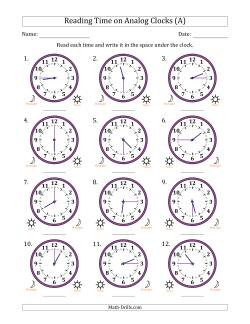

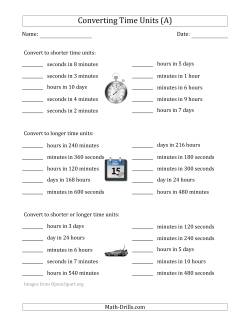
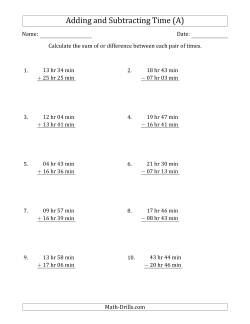
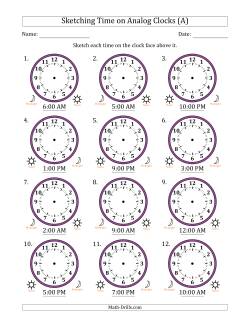
Calendars

- The calendars on this page are meant for anyone to use for purposes including personal schedules, classroom planning, holiday calendars, business meetings, event calendars, or anything else. They can also be used in math activities such as elapsed date activities. A simple activity with the monthly calendars is to ask students to place an item or mark on specific spots on the calendar (e.g. "Place a bean on a Tuesday in March."). After students become familiar with how a calendar is laid out and works, you can create more challenging activities like finding elapsed dates, discovering the number of days in each month, scheduling activities, etc.
- Yearly calendars are a great way to see an entire year on one page. Although not easy to write on all your appointments and anniversaries, they are a quick reference and can be very useful when completing math activities to familiarize students with calendars or more advanced activities with calendars.
- Specific yearly calendars for the years 2000 to 2050 are available in this section. For any other year or if you want a custom title, you can use the general yearly calendars with fillable titles. There are seven general yearly calendars and seven general leap year calendars in two different formats (Sunday to Saturday and Monday to Sunday) which will cover any year from 1583 on.
- Yearly Calendars (Sunday to Saturday format)
Reading and Sketching Time on Analog Clocks
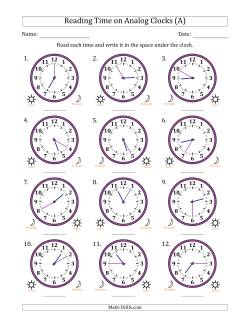
- Even though the time is displayed digitally in so many places these days—on cell phones, on computers, on microwaves—there are still quite a few analog clocks around. Besides being able to tell time on an analog clock, this is probably one of the first places that students encounter a number system other than base ten. Thanks to the Babylonians et. al. we have 60 seconds in a minute and 60 minutes in an hour. Once your students master the intricacies of the time system, they can start learning about other useful number systems like hexadecimal and binary, both of which are heavily used in computer programming.
- Suns and moons are included with each clock to indicate the time of day. Think of the moon as midnight and the sun as noon. If the clock has a moon (midnight) on the left and a sun (noon) on the right, then the time is between midnight and noon (AM in North America). The reverse means that the time is between noon and midnight (PM in North America).
- These clock worksheets include hour and minute hands, so students who are starting to learn reading time on analog clocks only have to worry about two arms. There are a variety of intervals available depending on the level of the student. The goal is to get students to be able to tell time to the minute. There are versions with twelve clocks and versions with four large clocks.
- Reading 12 Hour Time from Clocks with Minute Hands (12 Clocks per Page)












